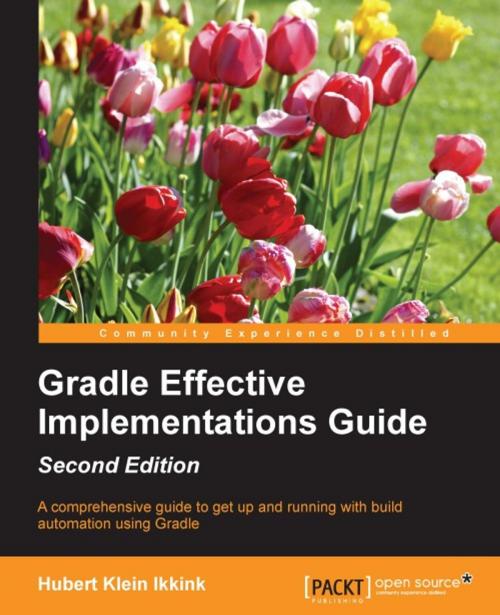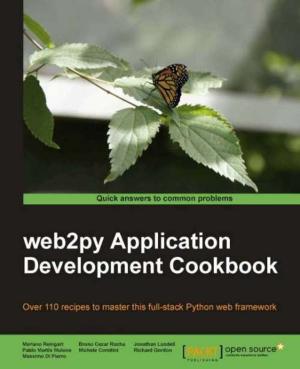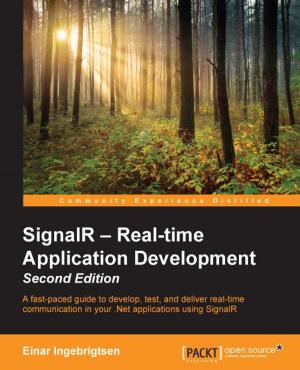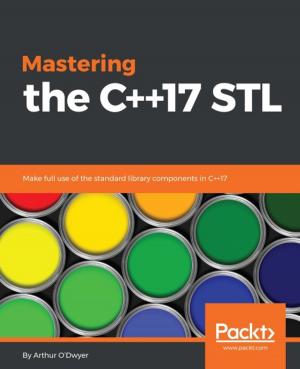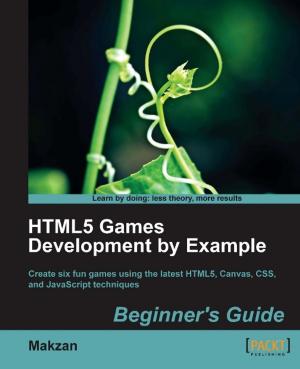Gradle Effective Implementations Guide - Second Edition
Nonfiction, Computers, Internet, Web Development, Java, Programming| Author: | Hubert Klein Ikkink | ISBN: | 9781784396114 |
| Publisher: | Packt Publishing | Publication: | May 30, 2016 |
| Imprint: | Packt Publishing | Language: | English |
| Author: | Hubert Klein Ikkink |
| ISBN: | 9781784396114 |
| Publisher: | Packt Publishing |
| Publication: | May 30, 2016 |
| Imprint: | Packt Publishing |
| Language: | English |
A comprehensive guide to get up and running with build automation using Gradle
About This Book
- Practical and engaging from start to finish covering the fundamentals of Gradle
- Learn the skills required to develop Java applications with Gradle and integrate at an enterprise level
- Apply the correct plugin and configuration to our Gradle build files to work with the different languages
Who This Book Is For
This book is for Java developers who have working knowledge of build automation processes and are now looking to gain expertise with Gradle and add to their skill set.
What You Will Learn
- Write your first Gradle Script
- Write build logic with the Gradle build language
- Explore the Java plugins supported by Gradle
- Understand dependency management in Gradle
- Package and publish your (web) application
- Integrate Scala and Groovy with Gradle
- Write your own custom tasks and plugins
- Integrate Gradle with your IDE
In Detail
Gradle is a project automation tool that has a wide range of applications. The basic aim of Gradle is to automate a wide variety of tasks performed by software developers, including compiling computer source code to binary code, packaging binary codes, running tests, deploying applications to production systems, and creating documentation.
The book will start with the fundamentals of Gradle and introduce you to the tools that will be used in further chapters. You will learn to create and work with Gradle scripts and then see how to use Gradle to build your Java Projects. While building Java application, you will find out about other important topics such as dependency management, publishing artifacts, and integrating the application with other JVM languages such as Scala and Groovy.
By the end of this book, you will be able to use Gradle in your daily development. Writing tasks, applying plugins, and creating build logic will be your second nature.
Style and approach
This step-by-step guide aims to cover the fundamentals of Gradle and focuses on providing the practical skills required to develop web application.
A comprehensive guide to get up and running with build automation using Gradle
About This Book
- Practical and engaging from start to finish covering the fundamentals of Gradle
- Learn the skills required to develop Java applications with Gradle and integrate at an enterprise level
- Apply the correct plugin and configuration to our Gradle build files to work with the different languages
Who This Book Is For
This book is for Java developers who have working knowledge of build automation processes and are now looking to gain expertise with Gradle and add to their skill set.
What You Will Learn
- Write your first Gradle Script
- Write build logic with the Gradle build language
- Explore the Java plugins supported by Gradle
- Understand dependency management in Gradle
- Package and publish your (web) application
- Integrate Scala and Groovy with Gradle
- Write your own custom tasks and plugins
- Integrate Gradle with your IDE
In Detail
Gradle is a project automation tool that has a wide range of applications. The basic aim of Gradle is to automate a wide variety of tasks performed by software developers, including compiling computer source code to binary code, packaging binary codes, running tests, deploying applications to production systems, and creating documentation.
The book will start with the fundamentals of Gradle and introduce you to the tools that will be used in further chapters. You will learn to create and work with Gradle scripts and then see how to use Gradle to build your Java Projects. While building Java application, you will find out about other important topics such as dependency management, publishing artifacts, and integrating the application with other JVM languages such as Scala and Groovy.
By the end of this book, you will be able to use Gradle in your daily development. Writing tasks, applying plugins, and creating build logic will be your second nature.
Style and approach
This step-by-step guide aims to cover the fundamentals of Gradle and focuses on providing the practical skills required to develop web application.
